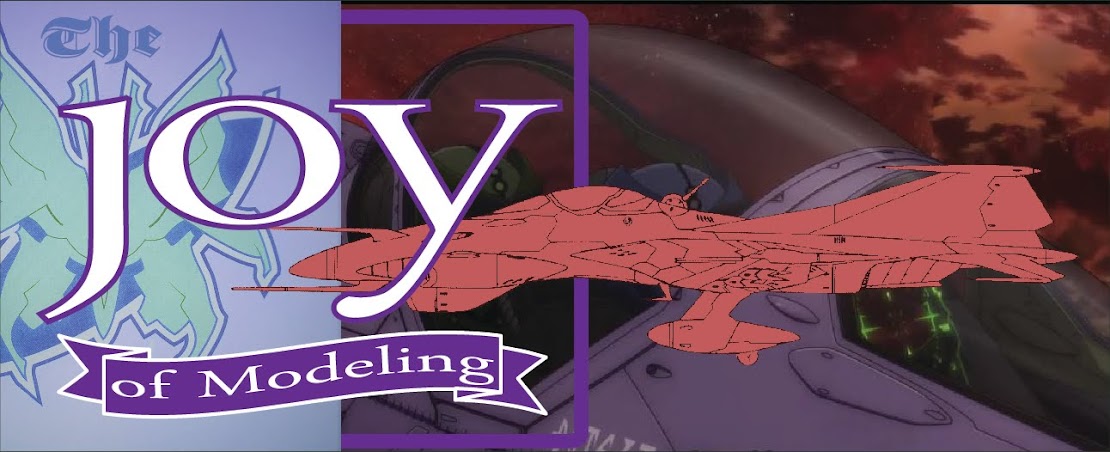Hi, Oscar G. here sharing my modeling passion with my fellow modelers, no matter what our size differences are. Let's get on with it before my proud country goes into the wood chipper.
Digitized views are printed on cheap paper. The two 1/4 inch slabs of styrene are laid right on the print to figure out how to build up and down. This hearkens back to building balsa wood airplanes right on the blueprints using pins.
Imagine the void, the empty space that will be the cockpit. I build styrene walls around it to define the space.
Constantly check size and scale, a 1/48th scale pilot is checked to see if everything seems right. Two figures will end up in here. The idea is that this fuse will get cast in resin and the cockpit will get dropped in.
I attached a floor plate onto the bottom of the raw fuse slab to define the cockpit. In my infinite wisdom I chopped the fuselage slab to make room to locate the engines. The engines were keeping me awake...trying to figure out how to blend these things into the bottom of the fuselage. They are round when they exit the fuselage, but where they are in the fuselage they are flattened into the bottom of the ship. Anyway, I thought cutting the fuselage would get me where we needed to be.
Here you can see the slab attached to the MDF rail that gets clamped in the vise.
Here is the slab in the vise in the mill. The MDF rail is on center, the slab is my datum, anything on the blueprint could be located on the slab. Once all the locating information is cut into it, I can think about all the other stuff, the outer shape and sundry details. In this pic I am milling a slot to center the rear fuselage portion.
Again, the pesky engine placement. These are "dummy engines" made to sort out how they are going to get made.
Here are the squared up styrene blocks that will define the cockpit void. To the left of the pic is the front. The crenelations in the two side peices are an attempt to incorporate canopy details. Let's just say I didn't plan that part well, and even though they look spiffy, served no useful purpose. Fortunately, model building is also a process of expanding one's consciousness. The channel that cuts across the slab is for brass pins to locate the the wings.
You can clearly see the cockpit void in the front section on the left. The two rear fuselage slabs are at the right. Between them in the slot is a .125 styrene section that will become the strake between the engines. I couldn't think about it anymore, I just had to start building.
I drew the top view on, then rough cut out on the band saw.
Smoothed the sides on the disc sander.
Bottom view. There are times during building when it seems like a total drag. I remind myself, not to hurry. This IS the fun part. I have lots of models on my shelves. Many I have not looked at in a long time. Once the thing is done...onto the shelf. On to the next...
I attached a floor plate onto the bottom of the raw fuse slab to define the cockpit. In my infinite wisdom I chopped the fuselage slab to make room to locate the engines. The engines were keeping me awake...trying to figure out how to blend these things into the bottom of the fuselage. They are round when they exit the fuselage, but where they are in the fuselage they are flattened into the bottom of the ship. Anyway, I thought cutting the fuselage would get me where we needed to be.
Here you can see the slab attached to the MDF rail that gets clamped in the vise.
Here is the slab in the vise in the mill. The MDF rail is on center, the slab is my datum, anything on the blueprint could be located on the slab. Once all the locating information is cut into it, I can think about all the other stuff, the outer shape and sundry details. In this pic I am milling a slot to center the rear fuselage portion.
Again, the pesky engine placement. These are "dummy engines" made to sort out how they are going to get made.
Here are the squared up styrene blocks that will define the cockpit void. To the left of the pic is the front. The crenelations in the two side peices are an attempt to incorporate canopy details. Let's just say I didn't plan that part well, and even though they look spiffy, served no useful purpose. Fortunately, model building is also a process of expanding one's consciousness. The channel that cuts across the slab is for brass pins to locate the the wings.
You can clearly see the cockpit void in the front section on the left. The two rear fuselage slabs are at the right. Between them in the slot is a .125 styrene section that will become the strake between the engines. I couldn't think about it anymore, I just had to start building.
I drew the top view on, then rough cut out on the band saw.
Smoothed the sides on the disc sander.
Bottom view. There are times during building when it seems like a total drag. I remind myself, not to hurry. This IS the fun part. I have lots of models on my shelves. Many I have not looked at in a long time. Once the thing is done...onto the shelf. On to the next...























































